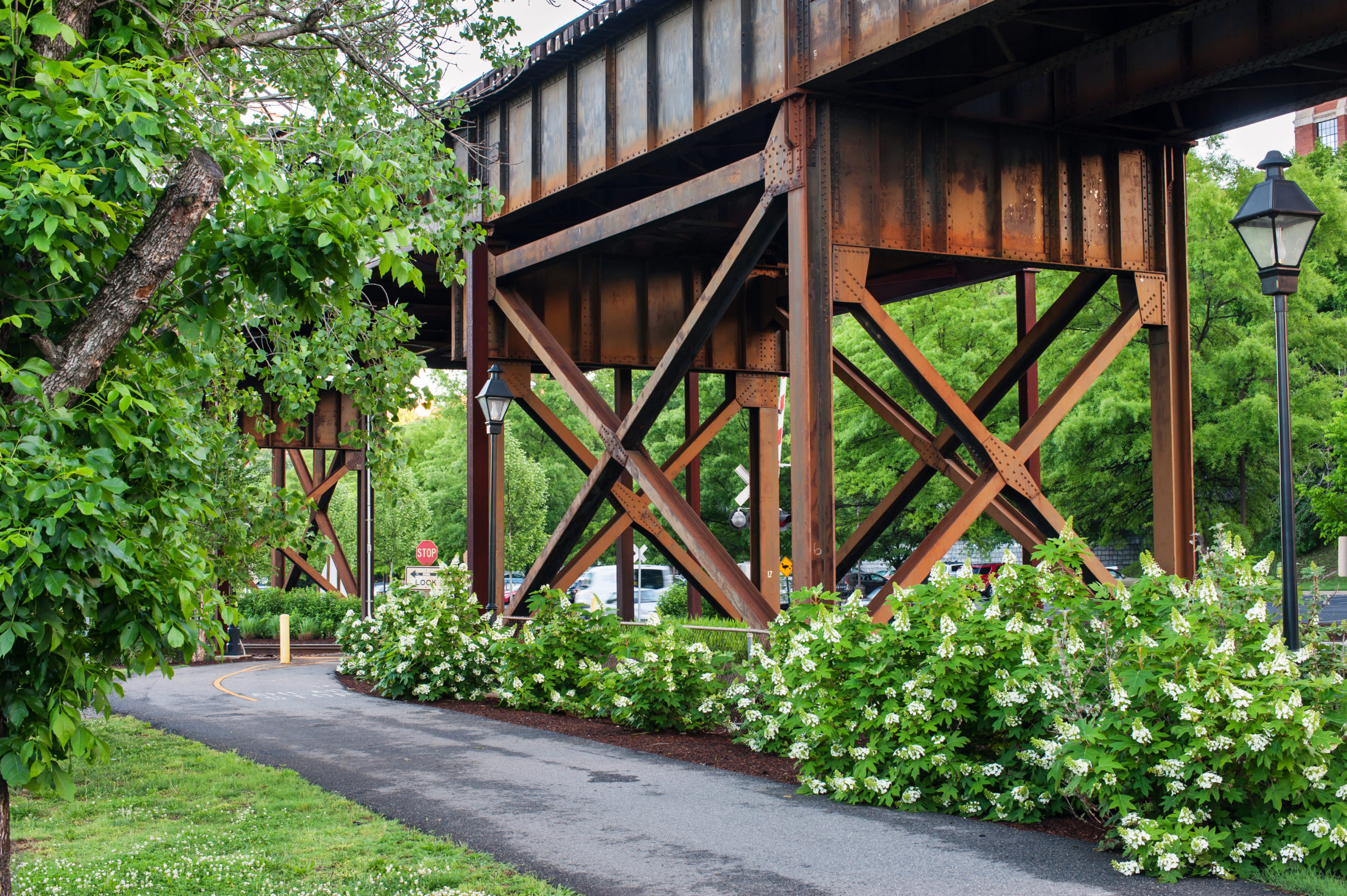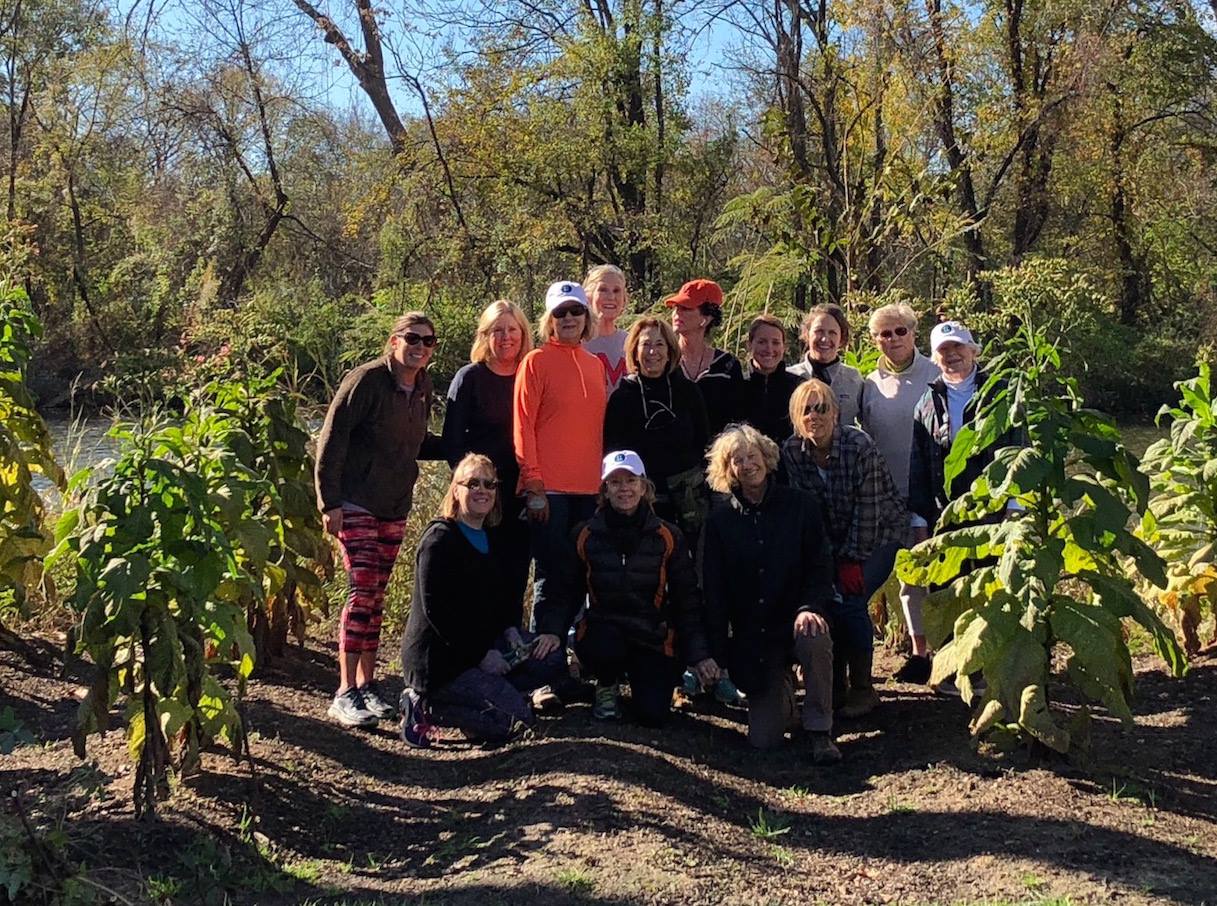The Birth of a Public Private Partnership to Transform Richmond’s Urban Landscape
Author: Meg Turner
In 2011, the City of Richmond and a consortium of four Richmond garden clubs formed a public/private partnership and transformed a city gateway paved in concrete into an inviting green passageway that cools the urban core, cleans the urban air, and reduces pollutants from the stormwater flowing into the James River. Capital Trees was born when these four Garden Club of Virginia-affiliated clubs assembled a team in 2009 to study the environmental benefits of urban landscapes and identify areas in which the clubs could enhance Richmond’s urban environment.
Noting the site’s barren landscape and steep slope toward the river, Capital Trees and city officials selected the 14th Street corridor as a pilot project for collaboration in 2010. The area is a center of local and state government, tourism and entertainment and serves as a primary route for pedestrians and vehicles. To get started, contractors hauled away tons of concrete from the median and the east and west passageways. We then removed the dead and dying street trees from inadequately sized tree wells, replacing them with Richmond’s first bio-retention planters. These planters will accommodate the trees for their lifespan, and were designed to capture and filter stormwater runoff that previously flowed down the street and into the city’s combined sewer outfalls.

The tree planters now serve as detention and treatment facilities, removing phosphorous, nitrogen and sediment prior to release. Swamp White Oaks (Quercus bicolor) and Ginkgos (Ginkgo biloba ‘Princeton Sentry’) now line both sides of the street and the median, forming a beautiful double allee. The bio-retention planters, filled with a mix of 85% sand, 10% soil and 5% leaf compost, were originally underplanted with native Blue Flag Iris (Iris versicolor) and Switchgrass (Panicum virgatum). Pedestrian lighting, improved sidewalks and educational signage complete the transformation of 14th Street.
 The success of the 14th Street project fostered a successful partnership between the city and Capital Trees, and led to another collaboration in 2013— this time with the City and the Virginia Capital Trail Foundation (“VCTF”) — to restore the landscape in Great Shiplock Park (“GSP”), after GSP was named the western trailhead of the Virginia Capital Trail.
The success of the 14th Street project fostered a successful partnership between the city and Capital Trees, and led to another collaboration in 2013— this time with the City and the Virginia Capital Trail Foundation (“VCTF”) — to restore the landscape in Great Shiplock Park (“GSP”), after GSP was named the western trailhead of the Virginia Capital Trail.

Capital Trees planted a mixture of trees and shrubs native to Virginia, and other non-native species selected for their urban hardiness, perennial beds, and an extensive rain garden with a bio-filtration system that captures and absorbs polluted storm runoff that previously ran from the parking lot directly into the Kanawha Canal, and, ultimately, the James River. Over 1300 trees, shrubs, perennials and grasses were initially planted, and a green was created, which is now used by the city, schools, and non-profits for gathering and staging activities at Chapel Island (across the locks, and part of the James River Park System). Local corporations have partnered with Capital Trees over the last decade to conduct employee workdays, adding thousands of perennials to the park. A quick-strike attack by beavers required the replacement of the River Birch (Betula nigra) along the canal. Ahh, the joys of managing a public landscape on the perimeter of a thriving river teeming with wildlife. This year, Capital Trees (a member of the committee working with the City to make Richmond a Bee City USA member) is rejuvenating the rain garden, and planting a pollinator garden (more on this in an upcoming blog post).

These successful collaborations proved the need for an organization to continue the public/private model for creating and restoring public landscapes in the City, and so the Boxwood, James River, Three Chopt and Tuckahoe garden clubs formed Capital Trees, which is now an independent 501(c)3 non-profit organization. With continuing support from the garden clubs, but also representation by leaders in Richmond’s civic, environmental, corporate, and creative communities, Capital Trees continues to work with city officials, local environmental groups, and corporate and private donors to envision, fund, implement, and maintain projects that enhance the aesthetic and environmental health of Richmond.
If you’d like to receive emails when we add new blog posts, please sign up for the Sustainability Blog email list by clicking here and entering your preferred email.


